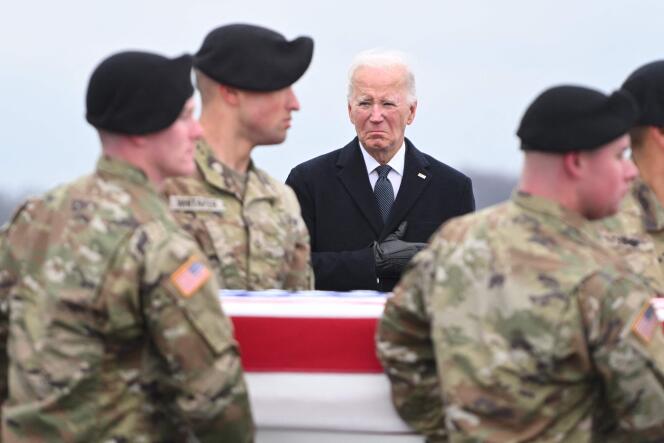


Joe Biden had an intense day on Friday, February 2. Surrounded by grieving families at Dover Air Force Base in Delaware, he witnessed the return of the bodies of three soldiers killed in a drone attack in Jordan five days earlier. Then, at around 4 pm, the president gave the go-ahead for the first phase of US retaliation. According to the White House, it was the weather that dictated this coincidental timing. This military response had been considered a certainty since the beginning of the week.
According to US Central Command, some 125 precision munitions were used against 85 different targets at seven sites – four in Syria, three in Iraq – belonging to the Islamic Revolutionary Guard Corps (Iran's main armed force) and pro-Iranian armed militias. These included command and intelligence centers, missile and drone warehouses and ammunition factories. B-1 bombers flown directly from the United States took part in the operation, along with an unspecified number of fighter jets.
It was a measured response, carefully weighed and planned in several phases spread out over time. Washington aimed upstream to limit the regional impact, while ensuring that the message of determination got through and that the operational capabilities of the pro-Iranian groups targeted were reduced.
In this delicate balance, the perception of American retaliation is at least as important as its operational quality. Nevertheless, there is uncertainty as to the consequences of this controlled escalation and the US's ability to restore deterrence. "The United States does not seek conflict in the Middle East or anywhere else in the world," Biden said in a statement on Friday. "But let all those who might seek to do us harm know this: If you harm an American, we will respond."
The strikes represent a "violation of Iraqi sovereignty," said a military spokesman for Iraqi Prime Minister Mohammed Shia al-Sudani in a statement, fearing "disastrous consequences for the security and stability of Iraq and the region." For its part, the White House stressed that the Iraqi government had been warned shortly before the strikes. However, there has been no direct or indirect communication with Tehran in recent days. The US still has some 2,500 troops in Iraq and 800 in Syria, but the country is clearly committed to withdrawing from the region after Afghanistan in the summer of 2021.
According to National Security Council spokesman John Kirby, the targets "were carefully selected to avoid civilian casualties and based on clear, irrefutable evidence that they were connected to attacks on US personnel in the region." A crucial choice among the options considered was that the Biden administration decided not to carry out strikes inside Iranian territory. On January 30, the president explained that he held the regime "responsible, in the sense that they're supplying the weapons to the people who did it." But for the past five days, officials in Washington have been stressing that they do not want regional escalation and direct confrontation with Iran. Iranian President Ebrahim Raissi made it clear before the launch of the US strikes that he would not trigger a conflict but that Teheran would "respond firmly" to any attempts at intimidation.
You have 50% of this article left to read. The rest is for subscribers only.
